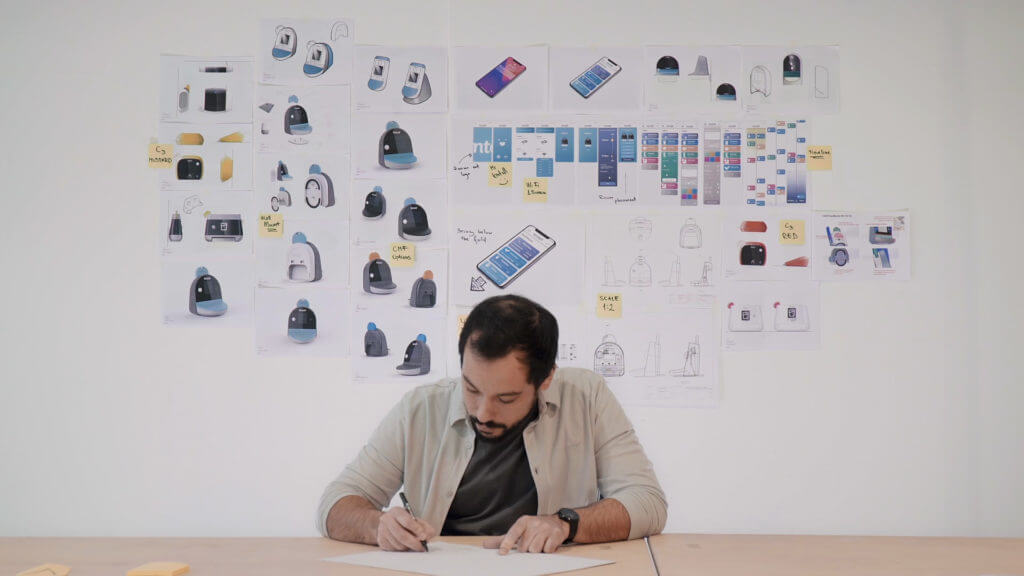3 Step Formula to a Successful Kickstarter Crowdfunding Campaign
Over the past 10 years, Crowdfunding has changed the way entrepreneurs, start-ups and innovative businesses can launch their products. Providing an alternative route to the problematic and expensive way of traditionally bringing an idea to market. But how do you launch a successful Kickstarter Crowdfunding Campaign? Our 3 step formula explains how you can.
Crowdfunding is amazing, it is a ‘game-changer’, giving entrepreneurs and start-ups the opportunity to launch their products and big ideas, but it hasn’t always been this way. Traditionally, launching a product was expensive and was only possible for companies with large R&D budgets. Most entrepreneurs or small businesses didn’t have a chance and could only dream of launching their products, with a small minority actually taking their idea from concept to selling it commercially. But thanks to the way the Internet has changed how we communicate with each other and with the rise of Crowdfunding, entrepreneurs and startups now have the ability to navigate the issues of traditionally launching their product and make their big ideas a reality.
Although crowdfunding has levelled the playing field for creators there is still a lot of work to be done in order to launch your product successfully. Many people see the large raises by certain successful campaigns on platforms like Kickstarter and instantly think Crowdfunding is the easy way to raise funding and the answer to their start-up dreams. However, Crowdfunding isn’t as simple as you may think.
Official stats from Kickstarter show that only a third of campaigns to date have been successful (489,000 campaigns launched, 183,000 successfully funded) and of those successful, the average funding raised was around $7,000. When you see these stats in the cold light of day it puts a different perspective on things. As mentioned before, many people see the successful campaigns that raise 6, 7 or 8 figures and think they can easily do the same. In fact, only the top 3% of campaigns raise over $50,000. The top 1% raise over $100,000 and those that reach 7 or 8 figures are the top 0.4%.
You can be successful and launch a 6,7 or 8 figure campaign, but it's vitally important that you understand what the successful campaigns do in order for you to replicate them. Whether you want to raise ten thousand dollars or one million dollars with the right effort, the right planning and hard work you can certainly do it.
So, what do successful campaigns do that unsuccessful campaigns don’t and what do you need to do to give your campaign the best chance of success and skyrocket the chances of smashing your funding goal?
From our own experiences, helping our clients to successfully launch 5,6 and 7 figure campaigns (joining the much sought after 1%) and by studying the most successful campaigns over the past couple of years we have developed this 3 step formula:
Step 1. A Unique Product
The most successful campaigns don’t rush their projects. They spend many months and years developing their idea. Researching similar products, understanding the needs of the user and then developing something that improves on what has become before. It's no coincidence that the big campaigns are for products that are generally labelled ‘The World’s First…’ These products and ideas are different to what has been made before and are pushing boundaries, creating unique innovations that provide users with something different.
For example, Vectoman wallet didn’t rush their launch. They spent two years tweaking the design of their luxury wallet, adding additional smart features, so that the wallet was completely different to any other wallet that had been launched before. When they did eventually launch they raised over $2million.
If you launch a product that is the same as what has come before, people will stick with what they already have. They have no reason to switch or upgrade. The psychology behind inventing products that people want is for you to change a user's habit in order to get them to buy.
Step 2. An Awesome Pitch Story.
It would be incredibly unjust if you decided to create an amazing product that was completely different to what has come before and then not backs it up with a standout pitch story that conveys exactly how your product helps its users. But unfortunately, this happens regularly. Many creators have great ideas and create awesome products but they fail to explain the value the product provides the user.
A great pitch story hooks audiences on a physical and emotional level. Your story and marketing message should be written so that the user thinks you have built your product specifically for them.
A pitch needs to stimulate your audience, and get them thinking emotionally,... “yes I must have that now!”. Create an offer your audience can't refuse. But remember you aren't selling, you are building a relationship with a user who has a problem or knows someone with the problem and has a need for your product, the solution to their problem. Work these message points into your pitch video, your campaign page and all of your marketing campaign and your crowd will be queuing to buy your product.
Step 3. A Hungry Crowd
A big mistake made by many people is thinking the crowdfunding platform (where the campaign is hosted) will provide the backers required to help fund the campaign. This is far from the truth. Industry stats show that around 75% of funds raised by campaigns come from their own traffic sources - their crowd.
It's vitally important that your project builds a crowd of hungry backers prior to launching. Backers who are ready to buy your product as soon as you go live. This will allow you to reach your minimum funding goal quickly and give your campaign momentum. Once your campaign is underway and off to a good start you can send cold traffic to the campaign page and make more sales.
Platforms like Kickstarter will only advertise your project in its newsletters and promote the campaign on its homepage once the campaign is showing signs of success and audiences are backing it.
So it is vital you build your crowd beforehand using organic and paid advertising methods - such as leveraging your contacts and generating leads through paid Facebook advertising campaigns.
Crowdfunding really is a game-changer and helping entrepreneurs and start-ups all over the world make their dreams come true and it can make yours come true as well. To make sure your campaign is a success, seek support from a crowdfunding marketing agency and let them guide you on your crowdfunding journey and help reach your fundraising goal.
How To Raise Money For Your Start-up With Crowdfunding

As an entrepreneur with an idea for a new product or service, one of the biggest problems you will face is raising funding to launch your start-up. In years gone by, you would take your idea and a prototype to your bank manager and ask for a loan. The manager would assess your idea and would often be able to make his own decision. If you required a large amount of funding, he may refer it to head office.
Today, there is a smarter way to raise money for your start-up
Today, there is a smarter way to raise money for your start-up and build a crowd of loyal customers in the process, and that way is… crowdfunding. Crowdfunding provides you with the perfect way to validate your start-up idea, raise funding and build a crowd of early adopters and Investors; and you don’t have to worry about paying any loans back to the bank.
‘Rewards’ & ‘Equity’ Crowdfunding
The two main areas of crowdfunding are ‘Rewards’ and ‘Equity’.
Rewards crowdfunding lets start-ups raise funding for a project by giving backers of the campaign a reward. Generally the start-up has designed a new innovative product, which they pre-sell at a discount. The start-up uses the money to manufacture the product and the backer waits for the product to be made and delivered. Kickstarter and Indiegogo are the main crowdfunding platforms to use when planning a ‘rewards’ campaign.
Equity crowdfunding allows start-ups to raise funding by releasing shares (equity) in the company for a fixed amount of investment. Investors who back a start-up are hoping the business does well increasing the value of their shares which they can sell at a later date. In the UK platforms such as Crowdcube and Seedrs are the places to run your equity crowdfunding campaign.
Not all crowdfunding projects are successful
It has to be said that not all crowdfunding projects are successful and a start-up will need to invest a reasonable amount of money into running their campaign. However, running a successful campaign can be the difference between launching your start-up and it never getting off the ground at all. So the investment is generally worth the risk if you believe you have a great product or service that people need.
How to increase your chances of success?
Successful rewards and equity campaigns follow a few common practices, which you can model:
- They have a strong and unique product/service offer
- Are presented in an appealing and engaging way – with a pitch video, creative copy and images
- Implement a marketing strategy to help build attention about the campaign and mobalise your crowd.
- Have a team in place to manage the campaign workload.
Planning and implementing a crowdfunding campaign takes time and can be a lot of hard work. To increase your chances of successfully funding your campaign you should research past campaigns and gain a good understanding of what is required to run a successful campaign. Speaking with other start-ups who have crowdfunded is a good idea and hiring a crowdfunding marketing agency such as Wow Your Crowd, will help guide you on your crowdfunding journey and improve your chances of launching your start-up and realising your business dreams.
To learn more about Crowdfunding and how you can kick-start your campaign contact us today.



